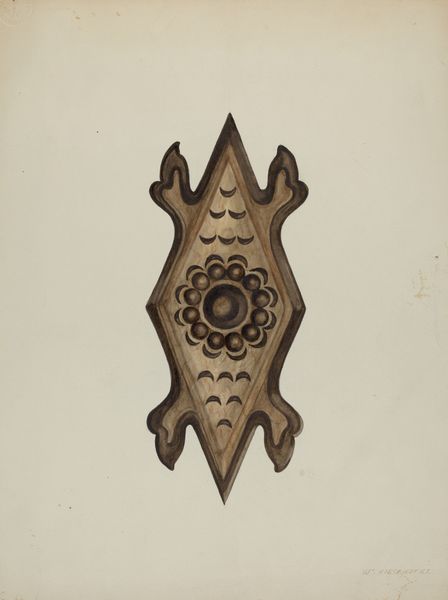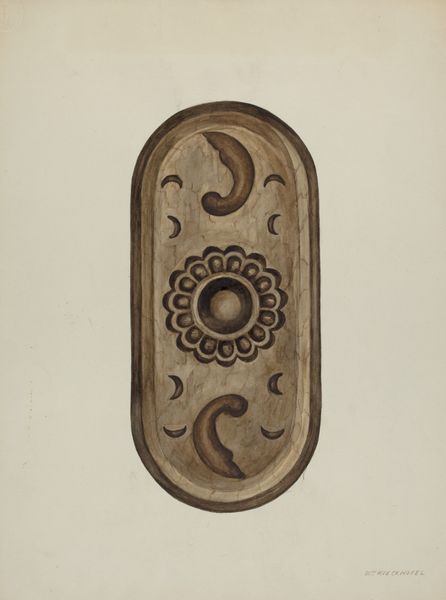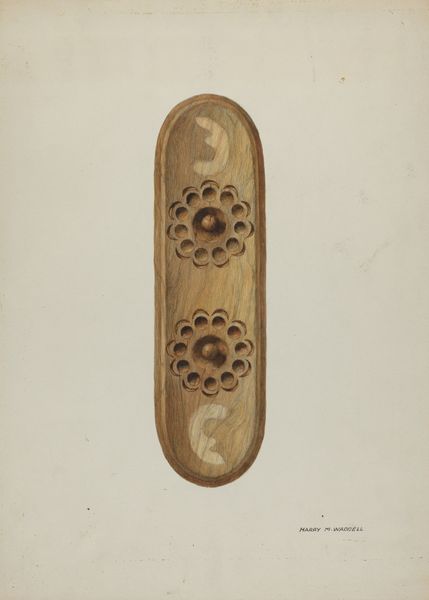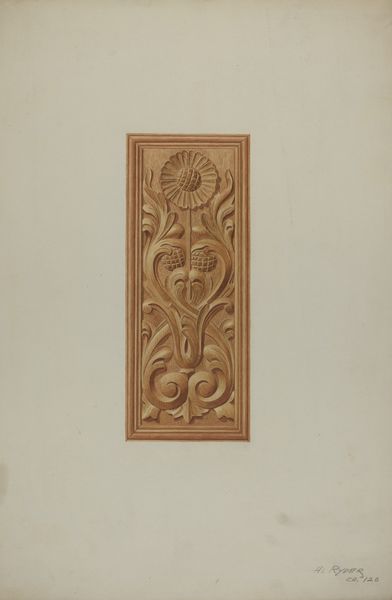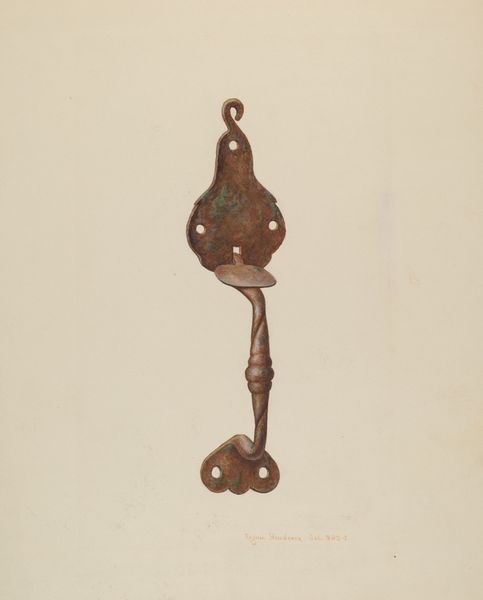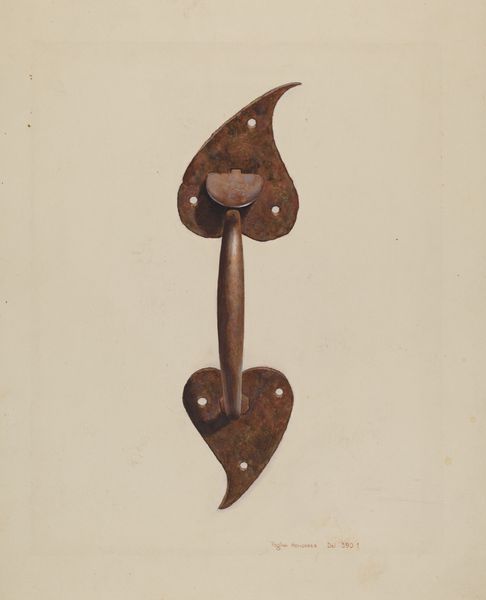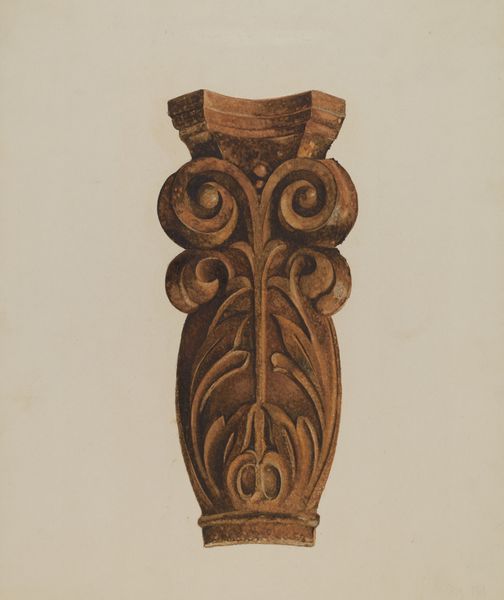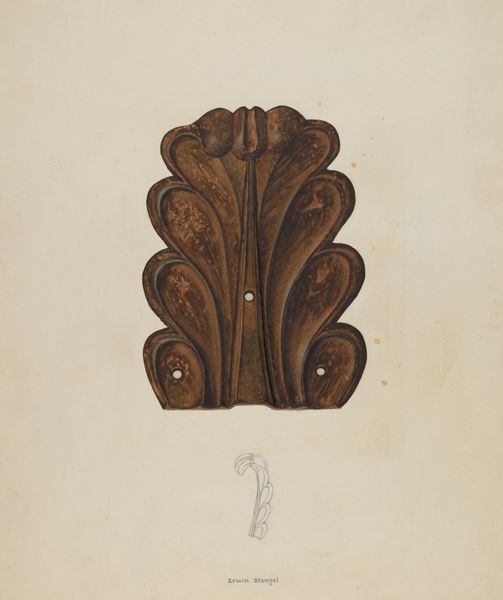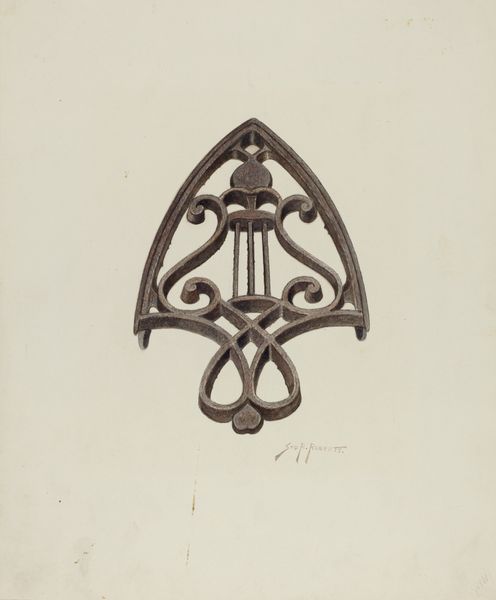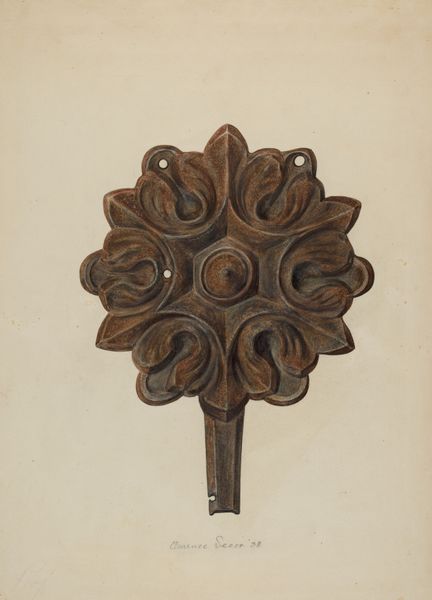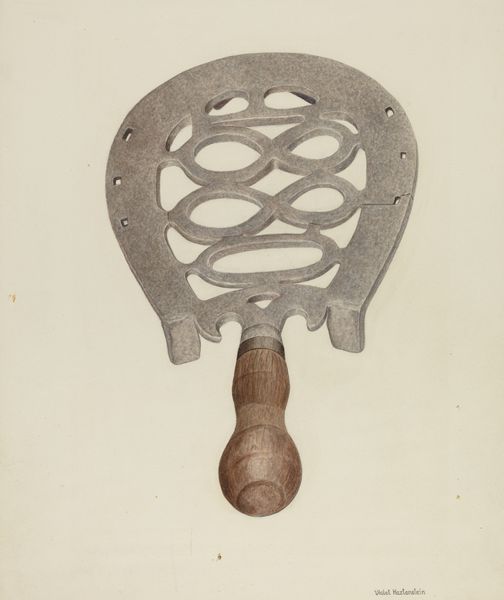
drawing, carving, pencil, wood, charcoal
#
drawing
#
carving
#
sculpture
#
charcoal drawing
#
pencil
#
wood
#
charcoal
#
decorative-art
#
watercolor
#
realism
Dimensions: overall: 29 x 18.9 cm (11 7/16 x 7 7/16 in.) Original IAD Object: 11 3/8" x 4 1/2" x 3/8"
Copyright: National Gallery of Art: CC0 1.0
Curator: This is an intriguing drawing titled "Detail, Side of Confessional" by Harry Mann Waddell, created around 1940. The work appears to depict a carved wooden detail. Editor: My first thought is "restrained elegance." The subtle gradations of color, the play of light and shadow on the carved wood. There is a formal precision in the symmetrical design, despite the earthy material. Curator: Indeed. There's a clear dialogue between the rigidity of geometric form, namely the diamond shape, and the organic feel conveyed by the wood grain, skillfully captured using pencil and charcoal, maybe even watercolor. Consider, the confessional itself, a space meant to elicit honest disclosure but also bound by strict ritual and design. Editor: Precisely! And it points to the theater of religious life. This detail, likely a small piece, speaks volumes about power and performance. The meticulous crafting of the confessional contributes to the atmosphere, dictating behavior within those sacred walls. Curator: We see concentric circles, radiating outwards with the texture almost resembling eyes adding to a rich and potent visual lexicon of contrition, absolution and societal mores regarding the private self versus the public sphere of penitence. Editor: Right. Each little divot acting almost as a receptor, to both witness and contain secrets. It's a brilliant observation of how seemingly innocuous elements can reinforce complex social dynamics. The confessional becomes more than furniture; it's an active agent of power. Curator: An intriguing detail which in some ways unlocks the complexities and cultural meanings attached to such ecclesiastical architecture, and their reflection within broader society at the time of the artwork’s creation. Editor: Absolutely. It prompts one to ponder the evolving role of institutions, like the Church, within societal consciousness through design, while observing a very beautiful composition.
Comments
No comments
Be the first to comment and join the conversation on the ultimate creative platform.
